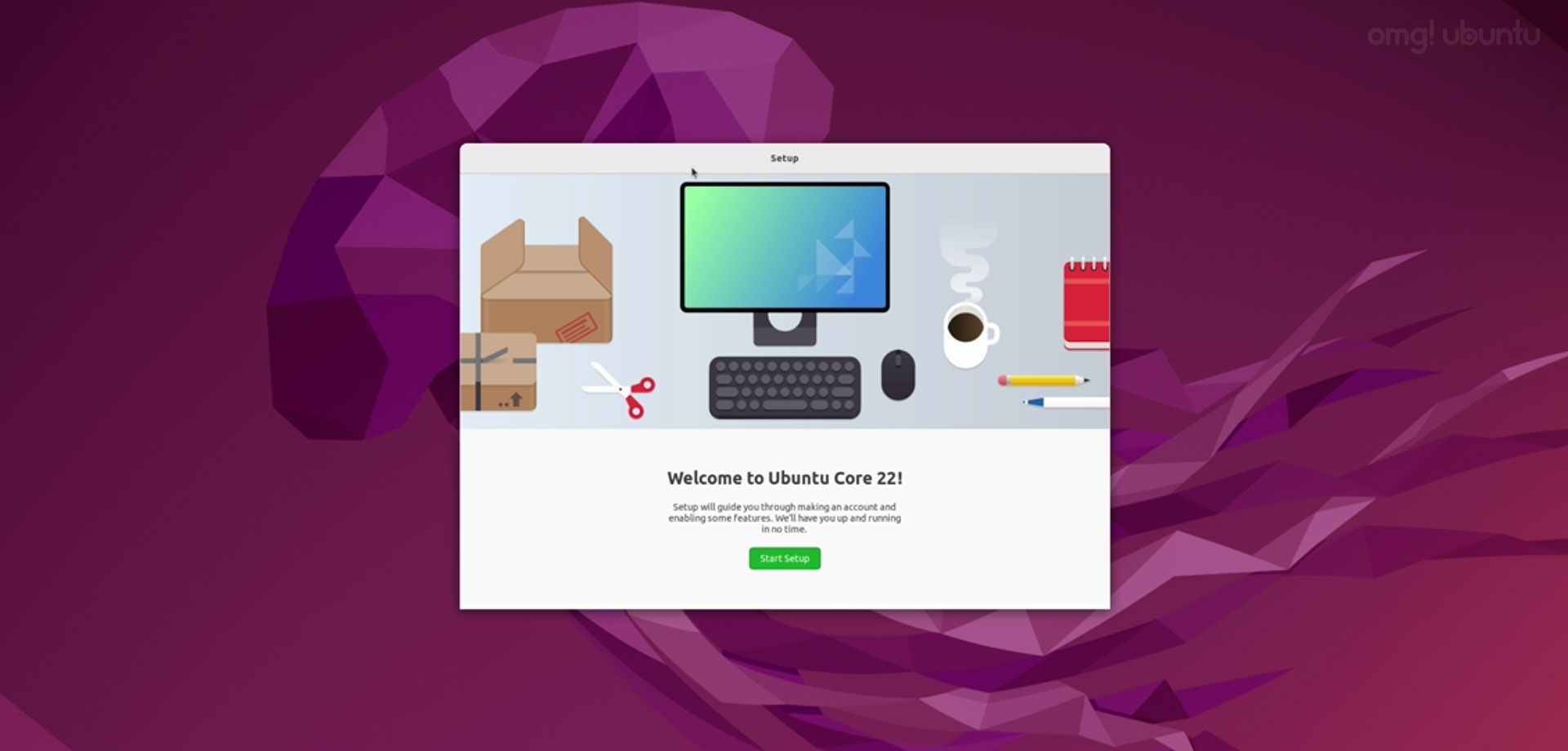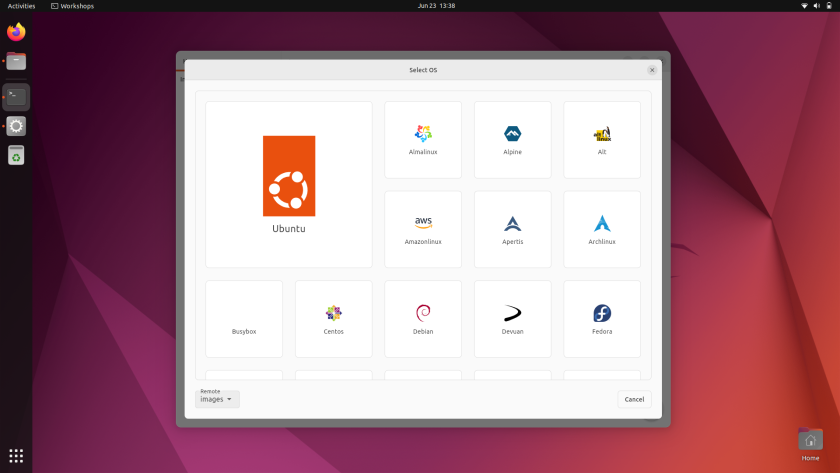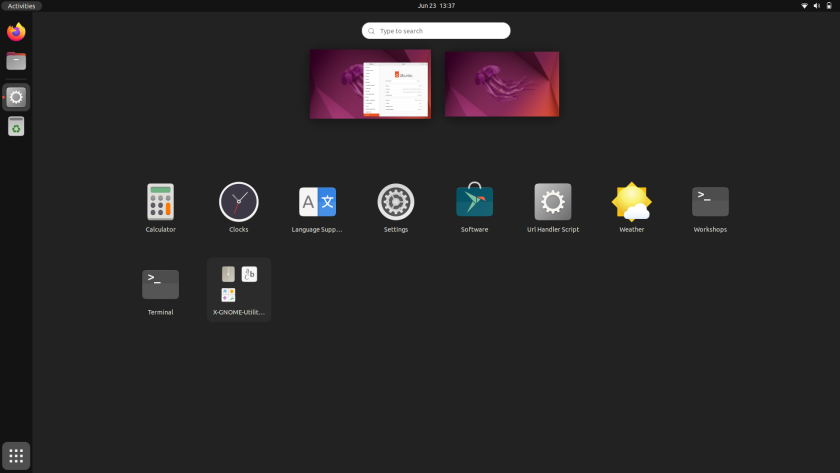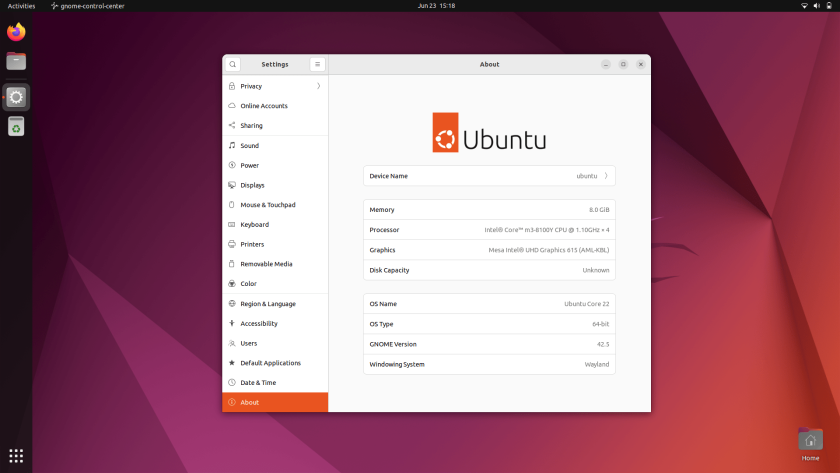Canonical recently confirmed its intentions to launch an all-snap Ubuntu desktop image next year — but you don’t have to wait until then to try it out.
If you scoot along to the Ubuntu Core Desktop GitHub page, check out the actions tab, find a (completed) build job, then scroll down to the ‘artefacts’ you’ll see a ZIP. Download and extract the ZIP, then extract the tarball inside.
Et voila: a ~12GB image you can boot in a VM1 or flash to a USB drive (16GB+).
All of this is public knowledge thanks to ex-Canonical employee (and immutable distro champion) Jorge Castro. Ubuntu’s Ken VanDine popped around Jorge’s gaff to show him progress on the all-snap sandboxed desktop effort and Jorge tooted about it at length.
—I know, right: there you were about to congratulate me on my first big scoop™ 🍦 in, what, a decade?
Still, other Linux blogs will be relieved they don’t need to acknowledge this site’s existence if covering this news. It’s okay guys, you can pretend you heard about this elsewhere 😘.
For those not aware, an all-Snap Ubuntu desktop is planned for release next April, alongside Ubuntu 24.04 LTS. However, it will NOT be the default version of Ubuntu 24.04 but an “alternative” download people have to knowingly go-out-of-their-way to download.
Which is a good job as Ubuntu Core behaves rather differently to a standard Ubuntu desktop install.
So what do we know about Ubuntu Core Desktop (as I’m choosing to call it for now)? Courtesy of Jorge the following:
- Always uses an LTS base (so, right now, 22.04)
- Runs as an lxc container
- Cloud-native “Workshop” terminal (think DistroBox)
- Use channels for kernels, DEs, graphics drivers
- Ships Flutter-based software store by default
- Sandboxed but classic snaps run fine
- You can install other DEs (inc. different versions of the same one)
Jorge says from his hands-on that “resource usage is better than with classic ubuntu by a measurable amount”. That could be a unique selling point (as heck knows it’ll need one to win over those who are less-than-sold on snaps).
I can’t say own hands on experience was as revelatory, mind.
I did run the image off a generic USB 3.0 drive plugged in to my (not exactly top spec) Chuwi AeroBook Pro. That may have impacted the experience somewhat, and your mileage will, as the internet likes to say, vary.
I hit a lot of snafus after getting to the desktop.
I presume most of my issues are a mix of snap portal/permission mismatches, bugs (this isn’t stable, remember), and missing pieces.
And because the set-up wizard didn’t add me as a root user I couldn’t auth to do much from the CLI, but I could install things from the Snap Store. Given the nature of this build that is arguably the focus anyway.
Jorge says PPAs and DEBs continue to work but apt wasn’t a recognised command at all, so I’m not 100% sure how I’m supposed to install them in this!
Still, as the underlying system is immutable, which means we can’t (or rather aren’t supposed to) tinker with it, it should be possible to mix-and-match other components as we see fit.
In theory, if you want an older version of GNOME but the latest Linux kernel and a specific MESA graphics driver, you can have them. This approach doesn’t affect the underlying version of Ubuntu, but allows Ubuntu to work in different ways to meet different needs.
Though support for Flatpak is, as of writing, MIA 💀.
Anyway, this is a very early preview build and all of the issues above are likely to be transient, temporary, or subject to classification as development picks up pace.
If you’re you’re inclined, go grab an artefact (Indian Jones’ style) and boot it to try it out yourself — just be sure to pop back and let me know what you think of it!
1 The included README walks through the whole process for booting in a VM. Alternative you can flash the .IMG file to a USB drive using a tool like Etcher, and boot from this on a real laptop/PC. Regardless of which way you choose the initial process will be very slow and the boot may appear unresponsive for an extended period. It also needs to restart once as part of the process. Again, all in the README.
tysm Padraic





